How America Stole The Land Of Hawaii 1893 And Confiscation All Hawaii's Property
How America Stole The Land Of Hawaii 1893 And For Centuries the Islands of Hawaii were ruled by warring factions. In 1810, King Kamehameha unified all of the Hawaiian Islands into one royal kingdom. Later, the traditional Hawaiian monarchy was overthrown in favor of a constitutional monarchy. Eventually, the monarchy itself was abandoned in favor of a government elected by a small group of enfranchised voters, although the Hawaiian monarch was retained as the ceremonial head of the government.
The 1897 Petition Against the Annexation of Hawaii
When the Hawaiian islands were formally annexed by the United States in 1898, the event marked the end of a lengthy internal struggle between native Hawaiians and non-native American businessmen for control of the Hawaiian government. The previous year, an annexation treaty was blocked when the newly-formed Hawaiian Patriotic League, composed of native Hawaiians, successfully petitioned the U.S. Congress to oppose it.
For centuries the islands of Hawaii were ruled by warring factions. In 1810, King Kamehameha unified all of the Hawaiian Islands into one royal kingdom. Later, the traditional Hawaiian monarchy was overthrown in favor of a constitutional monarchy. Eventually, the monarchy itself was abandoned in favor of a government elected by a small group of enfranchised voters, although the Hawaiian monarch was retained as the ceremonial head of the government.
During the 19th Century, Western influence grew. David Kalākaua was the last king of Hawaii, ruling from 1874 to 1891. In 1885, following a tradition of treaties favoring the United States, he signed a trade reciprocity treaty with the United States. This free-trade agreement made it possible for sugar to be sold to the U.S. market tax-free.
By 1887, when the Reciprocity Treaty was renewed, the Kingdom of Hawaii was overrun by white landowners, missionaries, and businessmen. The king promoted Hawaiian culture and traditions, but Hawaiian sovereignty suffered. U.S. sugar plantation owners came to dominate the politics of the islands. Their presence impacted social and economic life as well – the landholding system changed, and many aspects of traditional culture were prohibited, including teaching the Hawaiian language and performing the native Hula dance.
On July 6, 1887, a militia affiliated with the Hawaiian League, a non-native mostly U.S. businessmen's political party opposed to the king, under the leadership of Lorrin Thurston, threatened King Kalākaua. He was forced to sign a new constitution stripping him of his power and many native Hawaiians of their rights. It also replaced the cabinet with non-native politicians and businessmen. The new constitution came to be known as the "Bayonet Constitution" because Kalākaua signed it under duress.
When King Kalākaua died in 1891, his sister Lili'uokalani succeeded him. Though she introduced a new constitution that would restore her power and Hawaiian rights, she would be Hawaii's last monarch. Her move was countered by the "Committee of Safety," a group of non-native U.S. businessmen and politicians with sugar interests. Led by Sanford Dole, they had monetary reasons for doing so – they feared that the United States would establish a tariff on sugar imports, endangering their profits, and wanted to protect Hawaii's free-trade status. The United States was the major importer of Hawaiian agricultural products.
Supported by John Stevens, the U.S. Minister to Hawaii, and a contingent of Marines from the warship, U.S.S. Boston, the Committee overthrew Queen Lili'uokalani in a bloodless coup on January 17, 1893. The Committee of Safety proclaimed itself to be the Provisional Government.
Without permission from the U.S. State Department, Minister Stevens recognized the new government and proclaimed Hawaii a U.S. protectorate. President Benjamin Harrison signed a treaty of annexation with the new government. Before the Senate could ratify it, however, Grover Cleveland replaced Harrison as president and subsequently withdrew the treaty.
Dole sent a delegation to Washington in 1894 seeking annexation. Instead, President Cleveland appointed special investigator James Blount to look into the events in the Hawaiian Islands. The Blount Commission found that Lili’uokalani had been overthrown illegally, and ordered that the American flag be lowered from Hawaiian government buildings.
Lili'uokalani never regained power, however. Sanford Dole, leader of the Committee of Safety and the president of the Provisional Government of Hawaii, refused to turn over power. Dole argued that the United States had no right to interfere in the internal affairs of Hawaii. The Provisional Government then proclaimed Hawaii a republic – the Republic of Hawaii – in 1894, with Dole its first president.
The overthrow of Lili'uokalani and imposition of the Republic of Hawaii was contrary to the will of the native Hawaiians. In fact, there had been a series of rebellions by Native Hawaiians since the imposition of the Bayonet Constitution in 1887. On January 5, 1895, during the "Wilcox Rebellion," an armed revolt was suppressed by Republic of Hawaii forces. The leaders of the revolt were imprisoned along with Queen Lili'uokalani.
In March of 1897, William McKinley was inaugurated as President of the United States. McKinley was in favor of annexation, and the change in leadership was soon felt. On June 16, 1897, McKinley and three representatives of the government of the Republic of Hawaii – Lorrin Thurston, Francis Hatch, and William Kinney – signed a treaty of annexation. President McKinley then submitted the treaty to the U.S. Senate for ratification.
Queen Liliuokalani and her fellow citizens successfully protested the annexation by petitioning Congress. Two Hawaiian groups, Hui Aloha 'Aina and Hui Kulai'aina, one group for men and one for women, organized a mass petition drive. They hoped that if the U.S. government realized that the majority of native Hawaiian citizens opposed annexation, the move to annex Hawaii would be stopped.
Between September 11 and October 2, 1897, the two groups collected petition signatures at public meetings held on each of the five principal islands of Hawaii. The Hui Aloha 'Aina (translated as the Hawaiian Patriotic League) petition – clearly marked "Petition Against Annexation" and written in both the Hawaiian and English languages – was signed by 21,269 native Hawaiian people. That was more than half of the 39,000 native Hawaiians and mixed-blood persons reported by the Hawaiian Commission census for the same year.
Four delegates, James Kaulia, David Kalauokalani, John Richardson, and William Auld, arrived in Washington, DC, on December 6 with the 556-page petition in hand. That day, as they met with Queen Lili'uokalani, who was already in Washington lobbying against annexation, the second session of the 55th Congress opened. The delegates and Lili'uokalani planned a strategy to present the petition to the Senate.
The delegation and Lili'oukalani met Senator George Hoar, chairman of the Senate Committee on Foreign Relations on the following day, and on December 9, with the delegates present, Senator Hoar read the text of the petition to the Senate. It was formally accepted. The next day the delegates met with Secretary of State John Sherman and submitted a formal statement protesting the annexation to him. In the following days, the delegates met with many senators, voicing opposition to the annexation. By the time the delegates left Washington on February 27, 1898, there were only 46 senators willing to vote for annexation. The treaty was defeated in the Senate.
Other events, however, immediately brought the subject of annexation up again. On February 15, 1898, the U.S. Battleship Maine was blown up in Havana Harbor in Cuba. The ensuing Spanish-American War, part of which was fought in the Philippine Islands, established the argument that the Hawaiian islands would be strategically valuable as a mid-Pacific fueling station and naval installation.
The pro-annexation forces in Congress submitted a proposal to annex the Hawaiian Islands by joint resolution, which required only a simple majority vote in both houses. This eliminated the 2/3 majority needed to ratify a treaty, and by result, the necessary support was in place. House Joint Resolution 259, 55th Congress, 2nd session, known as the "Newlands Resolution," passed Congress and was signed into law by President McKinley on July 7, 1898 — the Hawaiian islands were officially annexed by the United States. Sanford Dole became the first Governor of the Territory of Hawaii.
In a last, unsuccessful attempt to return control of her homeland to native Hawaiians, Queen Lili’uokalani sent a letter of protest to the U.S. House of Representatives. She stated that her throne had been taken illegally, and that any U.S. efforts to annex Hawaii without the due process of law would be unacceptable.
As a territory, Hawaii had little power in the U.S. government, holding only one, non-voting representative in the House of Representatives. The territory status allowed rich, white plantation owners to import cheap labor and export their products to the mainland with low tariffs. These landowners used their power to keep Hawaii in territorial status.
Native Hawaiians and non-white Hawaiian residents, however, began to push for statehood. These residents wanted the same rights as U.S. citizens living in one of the 48 states. They wanted a voting representative in Congress and the right to elect their own governor and judges, who were currently appointed.
Over the course of the next 50 years, the Territory of Hawaii worked to achieve statehood. The legislature sent multiple proposals to Congress including a joint resolution requesting statehood in 1903, only to be denied. Other resolutions were similarly ignored.
In 1937, a congressional committee found that Hawaii met all qualifications for statehood and held a vote on statehood in Hawaii. Although this resulted in a vote in favor of statehood, the attack at Pearl Harbor paused all talks as the Japanese population in Hawaii came under suspicion by the U.S. government.
Hawaii’s territorial delegate Joe Farrington, elected in 1942, revived the battle for statehood after the war. While the House debated and passed multiple Hawaii statehood bills, the Senate did not vote on them. Hawaiian activist groups, students, and political bodies sent in letters endorsing statehood in hopes of spurring congressional action.
In the 1950s, Congress combined Hawaii’s statehood bid with Alaska’s. Congress ultimately decided to first grant statehood to Alaska, a then-Democratic leaning territory, in early 1959. With this new Democratic state, Congress was now open to granting the then-Republican leaning Hawaii statehood to restore political balance.
Finally, in March 1959, a Hawaii statehood resolution passed both the House and the Senate, and President Eisenhower signed it into law. That June, the citizens of Hawaii voted on a referendum to accept the statehood bill.
On August 21, 1959, President Eisenhower signed the official proclamation admitting Hawaii as the 50th state, marking the end of over half a century of work for Hawaiian statehood.
The official language of Hawaii is 'lelo Hawai'i, a Polynesian language of the Austronesian language family. The language evolved alongside the culture into the nuanced, multi-layered 'lelo Hawai'i we know today. The Hawaiian alphabet has only 13 characters, with 5 vowels and 8 consonants. King Kamehameha III established the first Hawaiian-language constitution in 1839 and 1840. The language has had a tumultuous history and was at one point even expected to be extinct by the end of the 20th century. However, a Hawaiian language "renaissance" has occurred over the past 40 years, and more people are interested in learning the language again.
Hawaiian is a Polynesian language spoken on all of the inhabited islands of Hawai‘i with only minor dialectical differences between them. In the nineteenth century, Hawaiian became a written language. At the same time, it became the language of the Hawaiian government in public offices, the courts, the school system and the legislature.
https://www.nationofhawaii.org/timeline/
1875 - Detail
March 18, 1875 - Trade treaty approved by U.S. Senate with the island Kingdom of Hawaii granting the United States exclusive trading rights.
Hawaii Reciprocity Commission
The Kingdom of Hawaii was going through a transitive year. A new king had been elected by the legislature, thirty-nine to six, David Kalakaua, on February 12, 1874, which had not pleased Queen Emma, widow since 1863 of Kamehameha IV, or her supporters, who rioted. That riot needed British and American Marines to stop. Once peace had been restored, King Kalakaua visited Washington, D.C. in 1874, the first monarch from Hawaii to do so, and discussed establishing a trade agreement between the two nations. There was already significant trade between the island country and mainland United States; $1.3 million worth of goods sent to Hawaii from the U.S.A., $1.8 million sent back.
Agreements on trade between the two nations had been codified since December 23, 1826 in the Treaty of Friendship, Commerce, and Navigation Between the United States and the Sandwich Islands (Hawaii), 1826, which allowed ships to ports of entry for trade purposes, as well as friendship. It did not address sovereignty, although many saw the treaty as a de facto indirect recognition of their independence. This treaty was the first for the Kingdom with any foreign power. It was never ratified by the U.S. Congress, although the articles were adhered to. Another trade agreement in 1849, the Treaty of Friendship, Commerce, and Navigation and Extradition, 1849, granted U.S. citizens the right to reside in Hawaii and eliminated duties. In 1853, diplomatic relations were established with an American legation headed by David L. Gregg.
How the Treaty of Reciprocity Came About
Sugar cane plantation owners had been wanting a trade treaty with the United States for decades; Hawaiian leaders were wary that any solid agreement could lead to annexation. Businessmen in both nations were more willing, even to the extent of ceding land at Pearl Harbor for use by the United States. That did not occur during its initial seven years, once approved in 1875, but would lead in outgoing years to its creation.
Once David Kalakaua was inaugurated as King, he vowed to follow the Hawaii Constitution and toured the islands for three months. A trip to the United States was also planned, culminating in the first White House state dinner with President Grant on December 12, 1874. The Treaty of Reciprocity 1875 was signed on January 30, 1875, with a term of seven years. It was ratified by the United States Senate on March 18, 1875, the Kingdom of Hawaii on April 17, and signed by President Grant on May 31, 1875. The treaty did not include ceding the lands for Pearl Harbor. The main articles provided for duty-free import of Hawaiian agriculture into the United States and U.S. agricultural and manufactured goods back into Hawaii duty-free. It would go into force on September 9, 1876.
Did the Treaty have the desired effect on trade between the two nations? Yes. In 1874, exports from Hawaii to the United States were $1.8 million dollars. In 1890, at the end of the extension, they were $13.3 million dollars? But what about sovereignty? There are many historians who believe that the Reciprocity Treaty of 1875, and particularly the covenants of its extension, significantly led to the annexation of the Kingdom of Hawaii to the United States as a territory in 1898, thus eliminating its sovereignty.
Treaty of Reciprocity, 1875
Convention
The United States of America and His Majesty the King of the Hawaiian Islands, equally animated by the desire to strengthen and perpetuate the friendly relations which have heretofore uniformly existed between them, and to consolidate their commercial intercourse, have resolved to enter into a Convention for Commercial Reciprocity. For this purpose, the President of the United States has conferred full powers on Hamilton Fish, Secretary of State, and his Majesty the King of the Hawaiian Islands has conferred like powers on Honorable Elisha H. Allen, Chief Justice of the Supreme Court, Chancellor of the Kingdom, Member of the Privy Council of State, His Majesty's Envoy Extraordinary and Minister Plenipotentiary to the United States of America, and Honorable Henry A.P. Carter, Member of the Privy Council of State, His Majesty's Special Commissioner to the United States of America.
And the said Plenipotentiaries, after having exchanged their full powers, which were found to be in due form, have agreed to the following articles:
ARTICLE I - For and in consideration of the rights and privileges granted by His Majesty the King of the Hawaiian Islands in the next succeeding article of this convention, and as an equivalent therefor, the United States of America hereby agree to admit all the articles named in the following schedule, the same being the growth and manufacture or produce of the Hawaiian Islands, into all the ports of the United States free of duty.
SCHEDULE - Arrow-root; castor oil; bananas, nuts, vegetables, dried and undried, preserved and unpreserved; hides and skins undressed; rice; pulu; seeds, plants, shrubs or trees; muscovado, brown, and all other unrefined sugar meaning hereby the grades of sugar heretofore commonly imported from the Hawaiian Islands and now known in the markets of San Francisco and Portland as "Sandwich Island sugar;" syrups of sugar-cane, melado, and molasses; tallow.
ARTICLE II - For and in consideration of the rights and privileges granted by the United States of America in the preceeding article of this convention, and as an equivalent therefor, His Majesty the King of the Hawaiian Islands hereby agrees to admit all the articles named in the following schedule, the same being the growth, manufacture, or produce of the United States of America, into all the ports of the Hawaiian Islands free of duty.
SCHEDULE - Agricultural implements; animals, beef, bacon, pork, ham and all fresh, smoked or preserved meats; boots and shoes; grain; flour; meal and bran, bread and breadstuffs, of all kinds; bricks, lime and cement; butter, cheese, lard, tallow, bullion, coal; cordage, naval stores including tar, pitch, resin, turpentine raw and rectified; copper and composition sheathing; nails and bolts; cotton and manufactures of cotton bleached, and unbleached, and whether or not colored, stained, painted or printed; eggs; fish and oysters, and all other creatures living in the water, and the products thereof; fruits, nuts, and vegetables, green, dried or undried, preserved or unpreserved; hardware; hides, furs, skins and pelts, dressed or undressed; hoop iron, and rivets, nails, spikes and bolts, tacks, brads or sprigs; ice; iron and steel and manufactures thereof; leather; lumber and timber of all kinds, round, hewed, sawed, and unmanufactured in whole or in part; doors, sashes and blinds; machinery of all kinds, engines and parts thereof, oats and hay; paper, stationery and books, and all manufactures of paper and wood; petroleum and all oils for lubricating or illuminating purposes; plants, scrubs, trees, and seeds; rice; sugar, refined or unrefined; salt; soap; shooks, staves and headings; wool and manufactures of wool, other than ready made clothing; wagons and carts for the purposes of agriculture or of drayage; wood and manufactures of wood, or of wood and metal except furniture either upholstered or carved and carriages; textile manufactures, made of a combination of wool, cotton, silk or linen, or of any two or more of them other than when ready made clothing; harness and all manufactures of leather; starch; and tobacco, whether in leaf or manufactured.
ARTICLE III - The evidence that articles proposed to be admitted into the ports of the United States of America, or the ports of the Hawaiian Islands, free of duty, under the first and second articles of this convention, are the growth, manufacture or produce of the United States of America or of the Hawaiian Islands respectively shall be established under such rules and regulations and conditions for the protection of the revenue as the two Governments may from time to time respectively prescribe.
ARTICLE IV - No export duty or charges shall be imposed in the Hawaiian Islands or in the United States, upon any of the articles proposed to be admitted into the ports of the United States or the ports of the Hawaiian Islands free of duty, under the First and Second Articles of this convention. It is agreed, on the part of His Hawaiian Majesty, that, so long as this treaty shall remain in force, he will not lease or otherwise dispose of or create any lien upon any port, harbor, or other territory of his dominions, or grant any special privilege or rights of use therein, to any other power, state or government, nor make any treaty by which any other nation shall obtain the same privileges, relative to the admission of any articles free of duty, hereby secured to the United States.
ARTICLE V - The present convention shall take effect as soon as it shall have been approved and proclaimed by His Majesty the King of the Hawaiian Islands, and shall have been ratified and duly proclaimed on the part of the Government of the United States, but not until a law to carry it into operation shall have been passed by the Congress of the United States of America. Such assent having been given and the ratifications of the convention having been exchanged as provided in article VI, the convention shall remain in force for seven years, from the date at which it may come into operation; and further, until the expiration of twelve months after either of the high contracting parties shall give notice to the other of its wish to terminate the same; each of the high contracting parties being at liberty to give such notice to the other at the end of the said term of seven years, or at any time thereafter.
ARTICLE VI - The present convention shall be duly ratified, and the rafitications exchanged at Washington city, within eighteen months from the date thereof, or earlier if possible.
In faith whereof the respective Plenipotentiaries of the high contracting parties have signed this present convention, and have affixed thereto their respective seals.
Done in duplicate, at Washington, the thirtieth day of January, in the year of our Lord, one thousand eight hundred and seventy-five.
Hamilton Fish - Elisha H. Allen - Henry A.P. Carter
U.S.A. People's And Take Over Attempted Overthrow of the Hawaiian Kingdom,1893 - https://youtu.be/QmavRFmJG_U?si=oSUVpRgObyRYiH8s
Keanu Sai explains the event in five minutes.
How Did the US Annex Hawaii & Steal Its Land ?
https://youtu.be/dEbWjpfwLYk?si=BUMB_HKznZSGah8F
Here's How America Destroyed Hawaiian Culture.
https://youtu.be/rD4sUyWwqNU?si=NzInsQG__GKefr1S
How America Stole The Land Of Hawaii 1893
https://youtu.be/-tw4CyxBJEQ?si=hV_GuY3AWBbxz0tr
Hawaii was an independent nation until January 17, 1893. That day, the archipelago and its monarchical government were overthrown illegally by the United States. Since then, the USA has taken over Hawaii illegitimately, turning the island into a military base that threatens world peace, while sovereignty groups organize to rescue its legitimacy.
https://www.govinfo.gov/content/pkg/STATUTE-107/pdf/STATUTE-107-Pg1510.pdf
President William Jefferson Clinton signing Public Law 103-150 in the Oval Office at the White House in Washington, D.C. The resolution acknowledged the 100th anniversary of the January 17, 1893 overthrow of the Kingdom of Hawaii and offered an apology to Native Hawaiians on behalf of the United States for the overthrow of the Kingdom of Hawaii.
Today, we're taking a deep, and honest, dive into American history.
Hawaii History Timeline
Important Dates, Events, and Milestones in Hawaii History
Offers a chronological timeline of important dates, events, and milestones in Hawaii history.
The first Polynesians arrive by outrigger canoe 300-900AD. The first island inhabitants are the Menehune, who come over 2,000 miles from the Marquesas Islands north of Tahiti. In 1100 more Polynesian migration to the Hawaiian Islands from the Society Islands
17th Century Hawaii History Timeline
1627 - Spanish sailors visit Hawaii, describe volcanic eruption in ship's log
18th Century Hawaii History Timeline
1778 - Englishman James Cook of the British navy discovered Hawaii.
1780's - Other European and US trading ships began to arrive on their way to China. Disease brought from other parts of the world killed many of the Hawaiians.
1794 - Hawaii is placed under the protectorate of Great Britian by Vancouver
1795 - King Kamehameha I unifies Hawaiias.
19th Century Hawaii History Timeline
1810 -
All of Hawaii was under Kamehameha control.
First theatrical performance staged in Hawaii
1815 - Russian soldiers fail attempt to build a fort in Hawaii
1816 - Volcano House opens for tourists on the island of Hawaii, $1 per person for lodging
1819 - Kamehameha I dies, and his son Liholiho became Kamehameha II. He promptly abolished the local religion.
1820 - Protestant missionaries teach Christianity
1821 - Protestant missionaries arrived the following year and converted many Hawaiians to Christianity.
1826 - James Honnewell establishes C. Brewer & Co. Ltd. trade and service organization
1831 - Catholic missionaries that arrived during the late 1820s were forced to leave or be imprisoned in 1831.
1834 - Honolulu Police Department is founded by King Kamehameha III
1835 - The first sugar plantation is established on Kauai Island
1836 - Organization of the Royal Hawaiian Band
1838 - Ground is broken for the building of the Kawaiahao Church
1839 - Roman Catholics receive religious freedom
1840 - Hawaii adopted its first constitution .
1842 -
First House of Representatives is called to order
First class begins at Punahou, the new private school
1843 - Lord George Paulet seizes Hawaii in the name of England
1846 - Construction of Washington Place (now governor's residence) is completed
1848 - A law passed that year that divided the land between the king and his chiefs. Most of these men gave their land to the government, which in turn sold land to the Hawaiian people.
1849 - French admiral Legoarant de Tromelin fails in attempted invasion
1852 - First steam-propelled ship is used in interisland service
1853 - Smallpox epidemic takes the lives of over 5,000 Hawaiians
1858 - C. R. Bishop and W. A. Aldrich begin the kingdom's largest financial institution
1859 - Honolulu Gas Company is established
1860 - The Queen's Hospital's first structure's cornerstone is laid in place
1863 - Niihau island purchased by Elizabeth Sinclair, offered by King Kamehameha IV, $10,000
1865 - First immigrant plantation workers depart from Yokohama, Japan for Hawaii
1866 - Samuel Clemens (Mark Twain) sails into Honolulu Harbor
1874 - Supreme Court of Hawaii moves into Ali`iolani (where it remains yet today)
1875 - First official regatta held on King Kalakaua's birthday
1877 - King Kalakaua dedicates Kapiolani Park as a focal point of outdoor recreation
1878 - First telephone is in operation, two years after Alexander Graham Bell's patent
1879 - First locomotive-train pulled its first load of sugarcane on Maui
1882 - The king and queen move into Iolani Palace
1883 - Kamehameha Statue is unveiled
1885 - First polo match is played in Hawaii at Kohala on the Big Island
1886 -
Electricity arrives as five arc lamps are strung around Iolani Palace
Great Chinatown Fire; losses exceeded $1,455,000
1887 -
During the rule of King Kalakaua, many Hawaiian customs that had been discouraged by earlier rulers became popular again. He became known as the Merry Monarch. To enhance trade with the United States, Kalakaua allowed them exclusive use of Pearl Harbor as a naval base.
Kamehameha Schools are founded in memory of Puahi by husband Charles Reed Bishop
1889 -
Father Damien of Molokai's Kalaupapa leprosy settlement dies
Queen Liliuokalani wrote her famous song, "Aloha Oe"
Bishop Museum's original structure is completed
Robert Louis Stevenson, famous author, arrives in Hawaii
1890's - Several US and European settlers had begun planting pineapples. Sugarcane planting also became an important industry. Thousands of workers were needed for these plantations; many came from China, Japan and the Philippines.
1891 - Hawaii's only ruling queen came to power.
1893 - A revolution brought forth the Republic of Hawaii and the beginning of Sanford B. Dole's "Republic".
1894 - The Republic of Hawaii was established
1896 - Moana Hotel ("Grand Old Lady" of Waikiki/now the Sheraton Moana Surfrider) is planned
1898 - Hawaii's state flag is replaced by the United States' "Stars and Stripes"
20th Century Hawaii History Timeline
1900 -
Hawaii becomes a US territory
One pound of sugar costs 7 cents
1901 -
The Hawaiian Pineapple Company, now Dole, is established
James "Jim" Drummond Dole's first plants pineapple in Wahiawa's countryside
1901 - Honolulu Rapid Transit's inaugural run of electric streetcars
1903 - Joint Tourism Committee is created to promote the Territory to the world (now the HVCB)
1905 - Only 80 automobiles are registered on the island of Oahu
1910 - First airplane flight in Hawaii
1912 - Duke Kahanamoku participates at the Olympics in Stockholm
1916 - The brothel "Iwilei Stockade" is shut down
1917 - Charlie Chaplin visits Hawaii and speaks at the Honolulu Ad Club's luncheon
1920 - Prince Edward, Prince of Wales, visits the Islands
1922 - Honolulu Musum of Art is chartered
1923 - Hawaiian Dredging Co. begins dredging of the Ala Wai Canal
1924 - Work begins on the structural foundation of Aloha Tower
1927 -
Group of women found the organization "Outdoor Circle" and end billboard advertising
Inaugural Lei Day
The Royal Hawaiian Hotel opens for business
1929 - First interisland flight by Stanley C. Kennendy in an amphibious plane
1934 - President Roosevelt was the first US President to visit Hawaii
1935 -
First 2,270-mile trans-Pacific flight from San Francisco to Hawaii takes 21 1/2 hours
5-year-old Shirley Temple visits Hawaii
"Hawaii Calls" radio program enters the hearts and living rooms of America
1941 -
When World War II began in 1939, the United States chose to stay out of the war. After the historic Japanese bombing of Pearl Harbor and Oahu on Dec. 7, 1941, the United States declared war on Japan and entered World War II. Many of the damaged ships and submarines were repaired by armed forces and used in the war. The National Memorial Cemetery of the Pacific was dedicated in 1949 in Honolulu; thousands are buried there.
A lone Japanese pilot crash lands on Niihau and is killed after he shoots a Hawaiian
First land-based interisland flights
1946 - Great tsunami hits Hilo, killing over 100 people and causing $25 million damage
1956 - Financing is settled and Ala Moana Shopping Center opens
1957 - The first telephone cable from the US mainland to Hawaii operated
1959 - Hawaii became the 50th state on Aug. 21, 1959
1962 - The jet-aircraft terminal in Honolulu was completed
1982 - Hurricane Iwa causes about $312 million in damages
1991 - Carolyn Sapp becomes the first Miss America from Hawaii
1992 - Hurricane Iniki kills four and causes $2 billion in damages
1995 - http://www.Hawaiian.com goes online with the message of Live Aloha!
21st Century Hawaii History Timeline
2000 - The U.S. Supreme Court declares that restricting voting in the Office of Hawaiian Affairs to native Hawaiians violates the 15th Amendment.
2006 -
(March) Six weeks of rain results in major damage from flooding on the islands.
(October 15) A 6.7 magnitude earthquake on the Big Island results in property damage, landslides, tsunamis, power outages, and airport delays. The famous Mauna Kea Beach Hotel's entire south end collapses and it is shut down indefinitely. After a $150-million reconstruction, it reopens in December 2008.
2009 - The Native Hawaiian Government Reorganization Act of 2009 (the Akaka Bill) is introduced in Congress for the sixth time. The bill seeks to allow Native Hawaiians to seek a special status similar to that of Native Americans, but the bill fails to pass
A timeline of significant events in Hawaii’s history
Hawaii guide past and present history timeline ?
Hawaii Timeline - https://www.hawaiitourismauthority.org/media/1927/historical-timeline.pdf
This timeline of Hawaii’s history covers a number of events which impacted the islands. Each item links to an article for that period, containing more information on the event.
Year (A.D.) Event
400 – 500 First Polynesians Arrive
1000 Tahitians Arrive
1060 Tahitian priest Pa’ao installs prince Pili as ruling chief; Pili founds dynasty leading to Kamehameha
1778 Captain Cook lands on Kauai
1779 Captain Cook arrives at Kealakekua Bay on the Big Island
1779 Captain Cook killed by Hawaiians
1782 Chief Kalaniopu’u dies, naming his son Kiwala’o as his successor and placing his nephew Kamehameha in charge of war
1795 Kamehameha controls Hawaiian islands, except Kauai
1809 Kamehameha gains control of Kauai, uniting all the Hawaiian islands as a single kingdom
1819 Kamehameha dies
1819 Kamehameha’s son Liholiho (Kamehameha II) becomes King
1819 Kapu broken by Kamehameha’s favorite wife, Ka’ahumanu
1819 Battle over kapu system
1819 Kapu system abandoned
1820 Missionaries arrive from New England
1820 Whalers from Massachusetts begin using Lahaina and Honolulu as ports
1820 Sandalwood trade booming
1824 King Liholiho and Queen Kamamalu die while visiting England
1824 Kauikeaouli (Kamehameha III), Kamehameha’s last living son, becomes King
1825 Sandalwood trade declines
1830 Ka?ahumanu bans public performances of the hula
1832 Ka?ahumanu dies
1834 Majority of Hawaiians now literate
1835 The first large commercial sugar plantation begins operations
1840 The Kingdom of Hawaii Constitution institutes Western-style government and strengthens foreigners, legal rights
1848 The California gold rush boosts the sugar industry
1848 The Great Mahele Act establishes private land ownership
1849 Treaty creates most favored nation status between United States and Hawaii
1850 Right to buy land is granted to foreigners
1850 – 1859 Whaling industry hits its peak; then bottoms out due to the discovery of oil
1852 First Chinese workers arrive for plantation labor
1854 King Kauikeaouli dies
1854 Alexander Liholiho (Kamehameha IV) ascends the throne
1861 U.S. Civil War increases demand for Hawaiian sugar
1863 King Alexander Liholiho dies, leaving the throne to Lot (Kamehameha V)
1864 King Lot creates a new Constitution to restore more power to the monarchy
1868 First Japanese workers arrive
1872 King Lot dies
1873 William Lunalilo elected King by the Hawaiian Legislature
1874 King Lunalilo dies
1874 David Kalakaua elected King by the Hawaiian Legislature
1874 The American Reciprocity Act grants the U.S. use of Pearl Harbor and lifts U.S. tax on Hawaiian sugar
1878 Portuguese workers begin arriving
1886 Japanese government encourages workers to migrate to Hawaii en masse
1887 The Hawaiian League forces King Kalakaua to sign the Bayonet Constitution, reducing him to a figurehead
1891 King Kalakaua dies during a trip to San Francisco, California
1891 Kalakaua’s sister Liliuokalani succeeds him to the throne
1892 Queen Liliuokalani and the Legislature battle over her Cabinet appointments
1893 Queen Liliuokalani announces she has a new Constitution prepared
1893 Committee of Safety formed to overthrow Queen Liliuokalani
1893 With the assistance of U.S. Marines, the Committee of Safety forces Queen Liliuokalani to abdicate
1893 Provisional government requests annexation to U.S.
1893 President Harrison officially recognizes Hawaii’s new government as legitimate/a>
1893 Newly inaugurated President Cleveland orders investigation into Queen Liliuokalani’s overthrow
1893 President Cleveland attempts to restore Queen Liliuokalani to her throne
1894 Provisional government becomes the Republic of Hawaii
1895 Plans for revolt by Liliuokalani’s supporters squashed by police
1897 William McKinley inaugurated as President
1897 Annexation treaty introduced to Congress
1897 Liliuokalani sends written protest to annexation treaty
1898 Hawaii becomes a U.S. territory
1900 Organic Act establishes territorial government
1900 Pineapple plantations begin to thrive
1902 Prince Jonah Kuhio first elected as Hawaii’s Delegate to U.S. Congress
1900 – 1908 Large numbers of immigrants come to Hawaii to work, including Japanese, Koreans, Portuguese, Puerto Ricans, and Filipinos
1908 Gentleman’s Agreement between U.S. and Japan attempts to greatly limit Japanese immigrants
1921 Hawaiian Homes Commission Act attempts to restore some land to native Hawaiians
1924 Strike by Filipino workers turns into a deadly riot
1924 U.S. Immigration Act ends most Asian immigration to U.S., including Hawaii
1935 National Labor Relations Act paves the way for successful strikes
1938 Hilo Massacre
1941 Pearl Harbor bombed by Japan
1941 Martial law declared in Hawaii
1942 Japanese Americans in Hawaii’s National Guard reformed as the 100th Battalion
1943 442nd Infantry formed from Japanese Americans, including many from Hawaii
1945 World War II ends, normalcy restored in Hawaii
1946 Hawaii Visitors Bureau begins heavily promoting travel to the islands
1947 Hawaii Statehood Commission founded
1949 Massive strike against the Matson Line stops all Hawaiian imports and exports for six months
1952 The Immigration and Naturalization Law allows Hawaii’s large alien resident population to seek citizenship
1954 Democrats sweep territorial elections
1956 First harvest of commercially grown macadamia nuts
1956 Tourism and construction industries booming
1959 Martin Denny hits number one on the national Billboard Hot 100 chart
1959 Hawaii becomes the 50th state in the United States
1959 Daniel Inouye elected to Hawaii’s seat in the House of Representatives
1960 Jet travel greatly increases the number of visitors to the islands
1970s Revival of interest in native Hawaiian culture
1978 Office of Hawaiian Affairs created
1980s Sovereignty movement gains momentum
1990s Film and t.v. production increases dramatically
1990s Numerous closures of sugar and pineapple plantations
1993 President Clinton passes law apologizing for the 1893 overthrow of the Hawaiian monarchy
2000 “Akaka Bill” first introduced to Congress
2001 September 11 terrorist attacks cause a temporary decline in tourism
2006 Akaka Bill doesn’t pass cloture vote
We thank State Division of Forestry and Wildlife, University of Hawaiʻi CTAHR Cooperative Extension, and Pacific Fire Exchange for their collaborative support on this project. Funding was provided by Hawaiʻi State Grant-in-Aid Program, 2016, and the U.S. Forest Service, Pacific Southwest Region, under the terms of Grant No. 16-11052012-146 and No. 17-DG-11052012-143. USDA is an equal opportunity provider and employer.
We also thank the many mapping participants, workshop attendees, and survey respondents who made this all possible!
The summary results of the Rapid Mapping Assessment and Collaborative Action Planning can be found below.
The Hawaii Wildfires: The Role of Proper Vegetation Management around Power Lines in Wildfire Prevention If you’ve seen the news lately, you may have watched in horror as wildfires ravaged the beautiful island of Maui. There has been speculation that these wildfires may have been preventable (or at least more manageable) if vegetation around power lines had been properly cut back. Poor vegetation management around power lines is known to spark fires, and recent lawsuits have presented evidence that utility owners may be at least partially responsible for starting or exacerbating the wildfires in Hawaii. As experts in vegetation management, we wanted to weigh in and offer utility owners, property owners, and other concerned citizens with strategies to prevent these issues from happening near your home.
The Independent & Sovereign Nation State of Hawai‘i is a democratic parliamentary republic with a land base in Waimanalo, O‘ahu, Hawai‘i. The Nation of Hawai‘i was formed by Kanaka Maoli in pursuit of Independence and reconciliation from the United States. The official language is ‘Olelo Hawai‘i.
The Nation of Hawai‘i was promulgated on January 16, 1995 by the Hawai‘i Constitution, which was signed at ‘Iolani Palace, Honolulu, Hawai‘i. In 1995, Pu’uhonua D.K.B. Kanahele was elected as Head of State, and remains in this office to date. The Constitution reaffirmed for its citizens and for all Native Hawaiians, the “right to self-determination as a people” and “restoration of political, economic, social and cultural rights.”
The formation of the Nation of Hawai‘i is pursuant to U.S. Public Law 103-150, also known as the Apology Resolution, signed by the United States Congress in 1993 recognizing that “the illegal overthrow of the Kingdom of Hawaii on January 17, 1893, acknowledges the historical significance of this event which resulted in the suppression of the inherent sovereignty of the Native Hawaiian people;… and the deprivation of the rights of Native Hawaiians to self-determination;” (U.S. Public Law 103-150, Section 1).
The Legislative General Assembly of the Nation of Hawai‘i consists of The Citizens Assembly, Na Kupuna Council (Council of Elders), and the Head of State, currently Pu’uhonua D.K.B. Kanahele. It is administratively subdivided into 5 mokupuni (counties): Hawai‘i, Maui, Moloka’i, O’ahu, Kaua’i, with Lanai, Ni’ihau and Kaho’olawe, held in trust.
The pathway to reestablish the inherent sovereignty of the Nation of Hawai‘i’ followed international guidelines of self-determination by occupied nations and Indigenous Peoples, as stipulated in the The Montevideo Convention on the Rights and Duties of States (1933), providing that a State must possess a permanent population, a defined territory, a government, and the capacity to conduct international relations.
In 1993, Pu’uhonua D.K.B. Kanahele became a board member with the International Indian Treaty Council (IITC), the first Indigenous Peoples’ Organization (IPO) to be recognized as a Non-Governmental Organization (NGO) with General Status to the United Nations Economic and Social Council. The Nation of Hawai‘i became a member of the United Nations Permanent Forum on Indigenous Issues (UNPFII) in 2017 and was officially recognized as an Indigenous Peoples’ Organization in 2018.
Current Progress and Expansion
In 2019, Nation of Hawaiʻi launched Hawaii’s first community broadband network, in partnership with Internet Society and the State Department of Business, Economic Development & Tourism. Nation of Hawaii Broadband serves as Wireless Internet Service Provider (WISP) for the Village at Pu’uhonua O Waimanalo, providing digital connectivity for Citizen subscribers to attend work, school, and to foster entrepreneurial opportunities. Nation of Hawai‘i Broadband is leading Hawaii’s community network expansion with the deployment of broadband networks at Puʻuhonua O Waiʻanae Mauka and Makai on Oʻahu, Kipahulu on Maui, and Miloli‘i on Hawai‘i Island, bringing digital literacy and WISP capabilities to rural Native communities that need it most.
On November 28, 2021, the Nation of Hawai‘i declared economic independence with the signing of the Nation of Hawaii Bank Act, enacted in September 2021, and establishment of Nation of Hawai‘i Central Bank to regulate credit and digital currency in the best interests of the economic life of the Nation.
Economically, the bank and digital currency will help the Nation of Hawai‘i capitalize on the advantages of our unique position in the center of the Pacific Rim and opportunities to become a center for ethical investment and financial services. At the same time, investments in national security will facilitate the diversification of our local economy with profitable and innovative community based projects, producing meaningful employment and furthering local and national self-sufficiency.
In 2022, Nation of Hawai‘i established a presence and office space at Honolulu’s Foreign-Trade Zone 9, introducing International trade and commerce opportunities to the Nation’s economic development efforts, including a business center for Nation of Hawai‘i Central Bank and Nation of Hawai‘i University.
Together with local and international partners, The Nation of Hawai‘i is leveraging its financial foundation and traditional knowledge to develop sustainable, practical solutions to significant issues.
Historical Chronology Timeline All Hawaii's Treaty and Trust 1810 thru 2021
1810 – Kamehameha establishes a Unified Monarchial Government for the Hawaiian Islands.
1826 – Treaty w/ USA Peace, Friendship & Commerce.
1836 – Treaty w/ Great Britain, Lord E. Russell’s Treaty.
1839 – Hawaiian Bill of Rights, Magna Charta of Hawai’i
1839 – Treaty w/ France, Captain La Place’s Convention.
1840 – Hawaiian Kingdom Constitution
Though all the land belonged to King Kamehameha I, “it was Not his own private property.” It belonged to the chiefs & the people in communal, of whom Kamehameha I was the head & had management of the landed property.
1842 – Recognition, by USA no formal Treaty was necessary.
1846 – Recognition by Britain & France Hawaii’s Independence
1846 – Treaty w/ Great Britain
1846 – Treaty w/ Denmark
1848 – Treaty w/ Hamburg
1848 – The Great (Overthrow of the Land) Mahele
Communal Land Tenure is divided into pieces of royal patent deeds, land commission awards; private ownership prevails “Subject to Native Tenant Rights.”
1848 – Consular Notices Danish & Hamburg Treaties
1849 – Treaty w/ USA Friendship, Commerce, & Navigation.
1852 – Hawaiian Kingdom Constitution
1852 – Treaty w/ Sweden & Norway
1853 – Treaty w/ Tahiti
1854 – Treaty w/ Bremen
1854 – Proclamation of Neutrality
1858 – Treaty w/France
1859 – Trust – Queen’s Hospital – Free Health for Hawaiians
1862 – Treaty w/ Belgium
1862 – Treaty w/ Netherlands
1863 – Treaty w/ Italy
1863 – Treaty w/ Spain
1864 – Treaty w/ Swiss Confederation
1864 – Hawaiian Kingdom Confederation
1869 – Treaty w/ Russia
1871 – Treaty w/ Japan
1874 – Postal convention w/ New South Wales
1875 – Treaty w/ USA Reciprocity Treaty
1877 – Trust – Lunalilo Home for the aged Hawaiian
1879 – Treaty w/ German Empire
1881 – Trust – Kapiolani Maternity Hospital free maternity
1882 – Provisional Convention w/ Portugal
1884 – Supplemental Convention w/USA
1884 – Money Order regulation w/ Hong Kong
1884 – Trust – Kamehameha Schools, for education
1885 – Universal Postal Union additional Act of Lisbon
1886 – Convention w/ Japan
1886 – Universal Postal Union Ratification
1887 – Treaty w/ USA additional to reciprocity treaty
1887 – Treaty w/ Samoa
1893 – Draft Constitution of Queen Lili’uokalani failed
January 17, 1893 – Overthrow of the Hawaiian Kingdom
U.S. Minister John L. Stevens, a Committee of Safety of American & European sugar planters, missionary descendants & financiers who deposed the Hawaiian monarchy and proclaimed a provisional government.
1893 – Provisional Government
1894 – Republic of Hawaii
1898 – Ku’e Petition Stops U.S. Treaty of Annexation.
The Newlands Joint Resolution, an Act of U.S. Congress to Annex (republic) Hawaii and create the Territory of Hawaii in its place. There was NO Treaty of Annexation.
1900 – Organic Act – a Government for the Territory
1909 Trust – Queen Lili’uokalani’s Children Center
1921 Trust – Hawaiian Homes Commission Act
1945 – United Nations Decolonization
Sacred trust obligation & political process (FAILS). National Identity of Hawaiian people stolen by a multi-cultural society.
1959 – 50th State Admissions Act – creates DHHL
1978 – Hawaii State Con Con creates OHA
1980 – Trust – First Office of Hawaiian Affairs elections
1988 – Native Hawaiian Health Care Act – Papa O la Lokahi
1993 – Act 359 2nd Political Process (FAILED)
November 23, 1993 – U.S. Public Law 103-150
Apology for the Overthrow of the Hawaiian Kingdom Legal Opinion by Francis A. Boyle, International Law Professor.
“After 100 years, the United States government, has finally and officially conceded, that Native Hawaiian people have the right to restore the independent nation state that you had in 1893 when the U.S. came and destroyed it. The Native Hawaiian people have the right to now go out proclaim the restoration of that state.”
1994 – Proclamation: Restoring Hawai’i’s Independence
1994 – President Clinton letter to The Head of State
1995 – Hawai’i Constitution 1995
1995 – Declaration of National State of Emergency
1995 – Executive Order 95-001 – The Refuge Act
1995 – Executive Order 95-002 – The Passport Act
1996 – PU’A Foundation / UCC settlement for Overthrow
2001 – DLNR G.L. #S5368 – Recognition of Nation of Hawaii
2002 – Executive Order 95-003 – The Tribunal Act
2011 – Act 195 3rd Political Process (FAILED)
2015 – E.O. 95-004 – The National Monetary System Act
2015 – Japan Patent Office Registration of ALOHACOIN
2015 – Trip to Tokyo, Japan
To promote the ALOHACOIN crypto currency with Japanese businesses and government representatives, mainly from Shizuoka prefecture. We then flew to Yamagata prefecture at Haguro shrine and participated in a ceremony with Nashimoto Denka and the 3 legged Crow.
2016 – ALOHACOIN Registration Date & #5852538
2016 – First ALOHACOIN received by the Head of State
2016 – ALOHACOIN Crypto Currency TN filed with DCCA
2017 – Japan legalizes crypto-currencies in their Country
January 1, 2018 – first AlohaCoin draft white paper released
January 15, 2018 – AlohaCoin draft white paper update
January 17, 2018 – 125 Years since the Overthrow the AlohaCoin draft white paper updated
February 28, 2018 – latest update on AlohaCoin draft white paper.
October 2019 – Launch of Hawaii’s first community managed broadband network, in partnership with DBEDT and Internet Society.
November 2021 – Launch of Nation of Hawaii Central Bank, banking and digital currency acts.
-
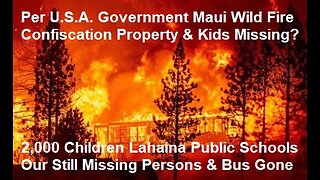 4:48
4:48
What If Everything You Were Taught Was A Lie?
6 months agoPer U.S.A. Government Maui Wild Fire Confiscation Hawaii's Property & Kids Missing
9.76K4 -
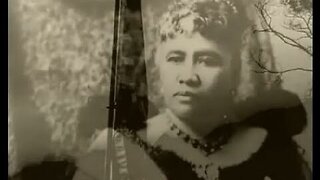 1:43:02
1:43:02
Watchman's Archive
11 years agoThe United States of Hypocrisy - The Stolen Nation of Hawaii FULL LENGTH
486 -
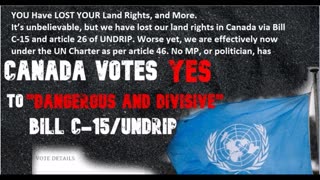 12:25
12:25
We The People - Constitutional Conventions
1 year agoLand Use Bylaw to steal your Land - UNDRIP
2.71K3 -
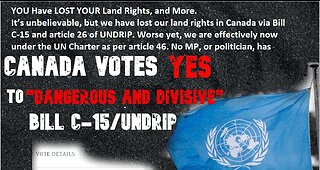 12:25
12:25
We The People - Constitutional Conventions
1 year agoLand Use Bylaw to steal your Land - UNDRIP
1.31K5 -
 2:15
2:15
MAGA Lion HAT
1 year agoAmerica was NOT built on STOLEN LAND! 🤓🤝🌎
3173 -
 15:55
15:55
Exposing the Fallen Angels and their followers!
9 months agoDISGUSTING! Mark Zuckerberg STEALS Maui from Native Hawaiians: LAND GRAB!
1.5K3 -
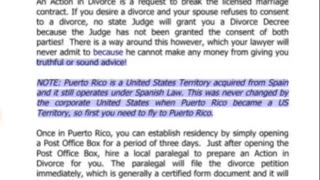 52:13
52:13
FlatEarther46
1 year agoAmerica's Shocking Secret Political History. Great American Adventure P5 Sovereign Citizens
1.24K -
 15:55
15:55
ProgressiveTruthSeekers
9 months agoDISGUSTING! Mark Zuckerberg STEALS Maui from Indigenous Hawaiians: LAND GRAB!
3.41K6 -
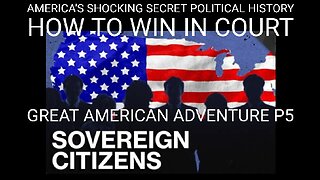 52:13
52:13
TheWarAgainstYou
1 year agoAmerica's Shocking Secret Political History. Great American Adventure P5 Sovereign Citizens
4.43K7 -
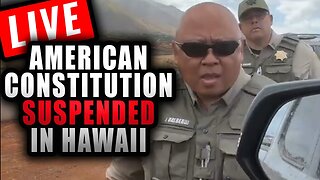 1:11:40
1:11:40
Watchman's Duty
8 months agoAmerican Constitution Suspended in Hawaii
12.2K25